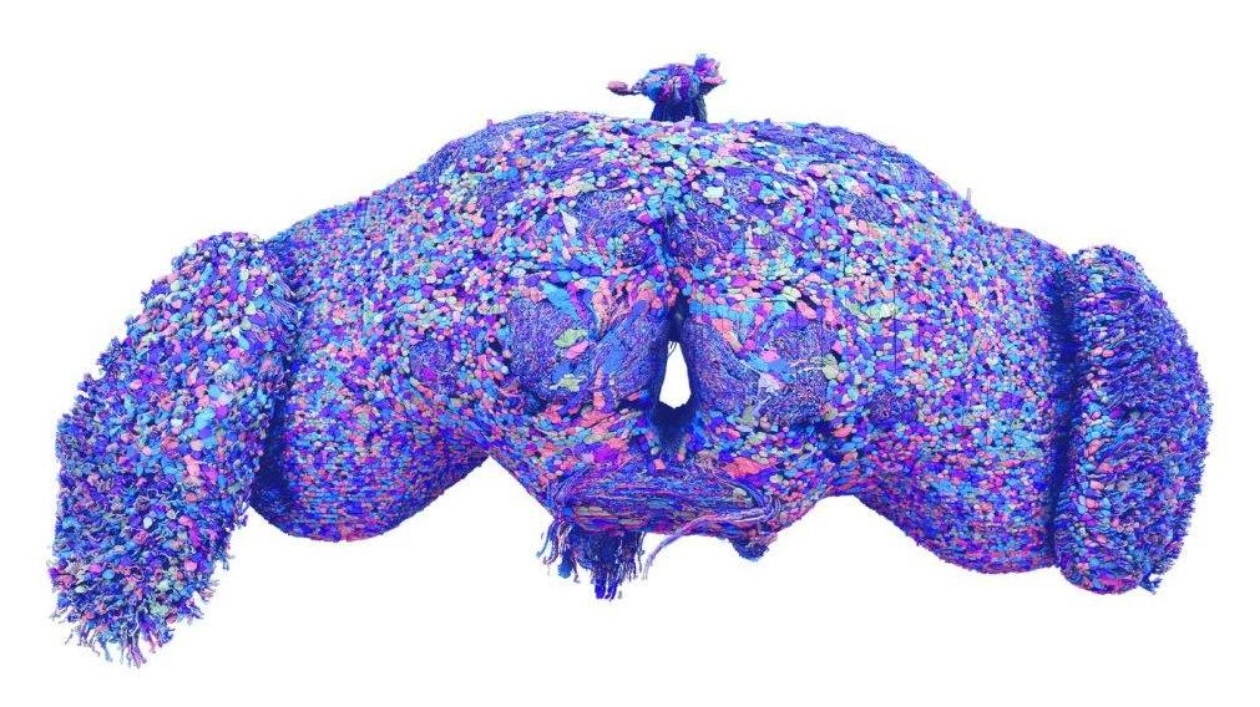In the intricate brain of a single fruit fly, nerve cells intricately intertwine, enabling every aspect of her life, from flight to mating, eating, and sleeping. Recently, scientists unveiled the first comprehensive map of these nerve cells—all 139,255 of them—along with their 54.5 million connections, in nine papers published on October 2.
This whole-brain map, meticulously crafted over years, is both minuscule and exquisite: it encapsulates 149.2 meters of neural wiring within a brain the size of a poppy seed. This detailed map offers insights into how neural information flows among cells in Drosophila melanogaster, a creature simpler than a human but complex enough to remain enigmatic to those seeking to understand its brain.
“This work is absolutely fascinating,” remarks neuroscientist Olaf Sporns of Indiana University in Bloomington. In 2005, he and his colleagues introduced the term “connectome,” a comprehensive account of the connections between nerve cells, or neurons. Since then, scientists have mapped more connectomes, including those of male and hermaphrodite C. elegans worms, a larval fruit fly, small sections of mouse and human brains, and part of an adult fruit fly’s brain.
This latest fruit fly connectome stands as the largest of its kind. “When connectomics first began, creating a map like this seemed almost like science fiction,” Sporns notes. “And now, remarkably, it’s here.” The project involved electron microscopy of over 7,000 thin slices of a female fruit fly’s brain and machine learning to align the complex tendrils of neurons, tracing cells through different slices. Machine learning brought researchers close to the whole connectome, but human oversight was crucial to correct errors.
Hundreds of people from over 50 laboratories meticulously proofread the map, ensuring the accuracy of cell shapes. “Did we anticipate it would take nearly 20 years to achieve the fly connectome? Probably not,” says Sebastian Seung, a computational neuroscientist at Princeton University. “But overly optimistic individuals drive progress.” Initially, working on a connectome map was seen as contrarian, with many believing it was impossible or that the data would be useless. However, the data have already proven valuable, revealing cellular details and insights into brain function.
For instance, the map identified only two CT1 neurons in the entire fly brain, each involved in sensing light and motion changes. Each neuron spans an entire eye and makes over 148,000 synapses. Another analysis categorized neurons into “integrators,” which receive numerous messages, and “broadcasters,” which send signals widely. With the connectome now mapped, scientists are developing computer models to simulate brain information flow.
One study demonstrates how taste neurons activate downstream cells. “My joke for science fiction enthusiasts is that one fly had to be sacrificed for this experiment, but this fly could live forever in simulation,” Seung quips. Sporns envisions a future where connectome maps will become even more comprehensive and detailed, soon including brains of vertebrates like mice and humans. These maps will help address significant questions about brain connectomes, such as individual variability, changes over time, and predicting behaviors.






